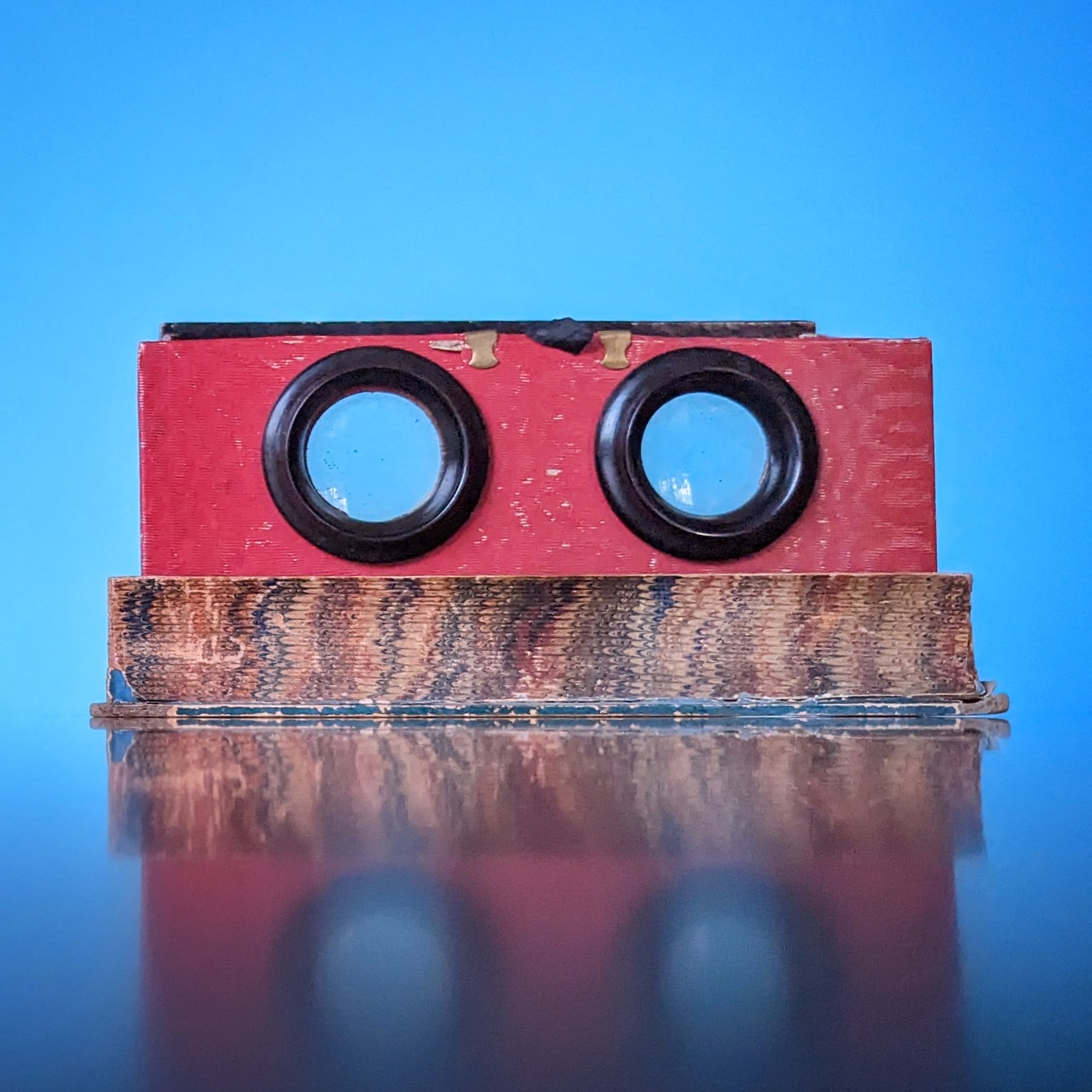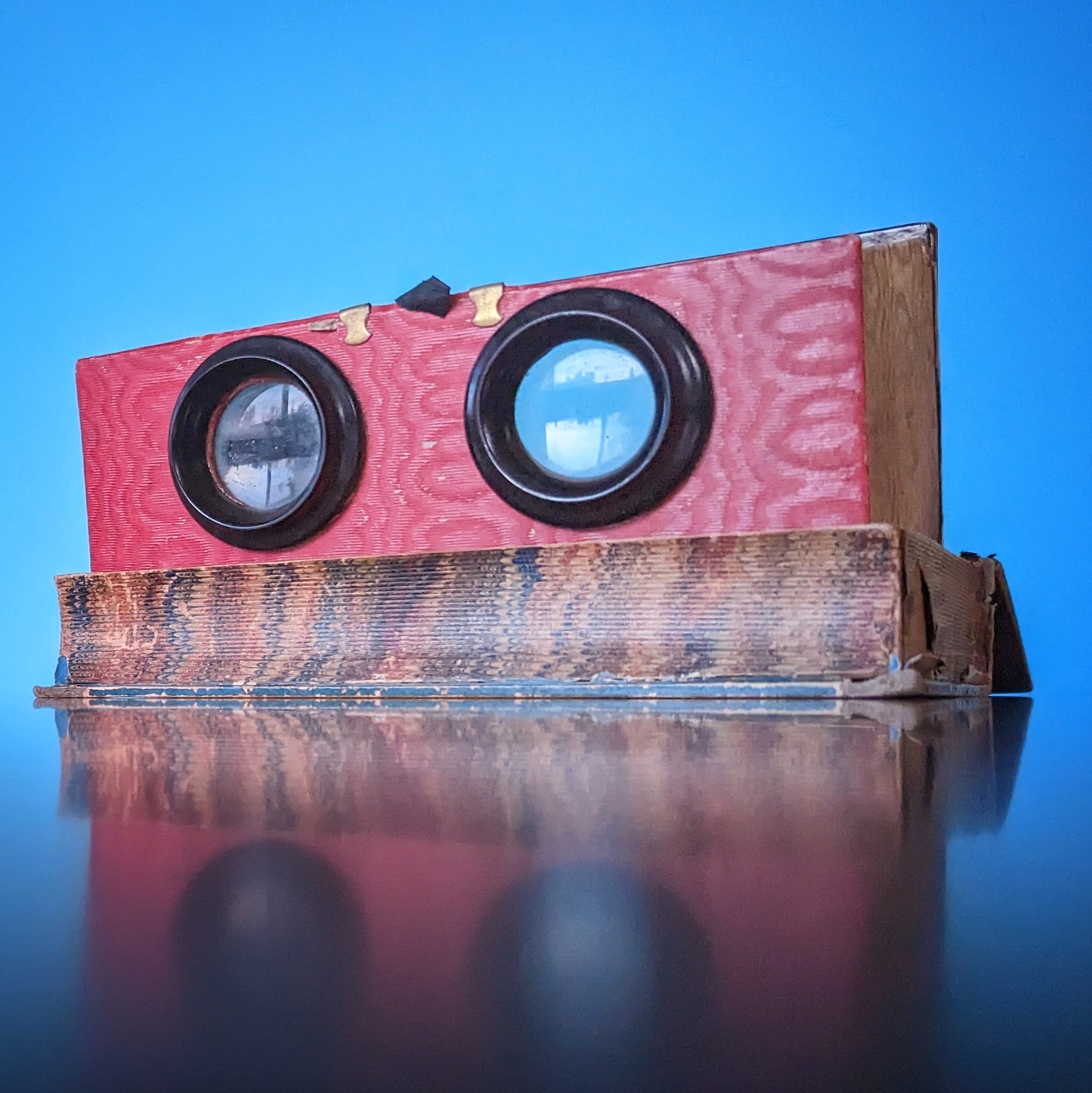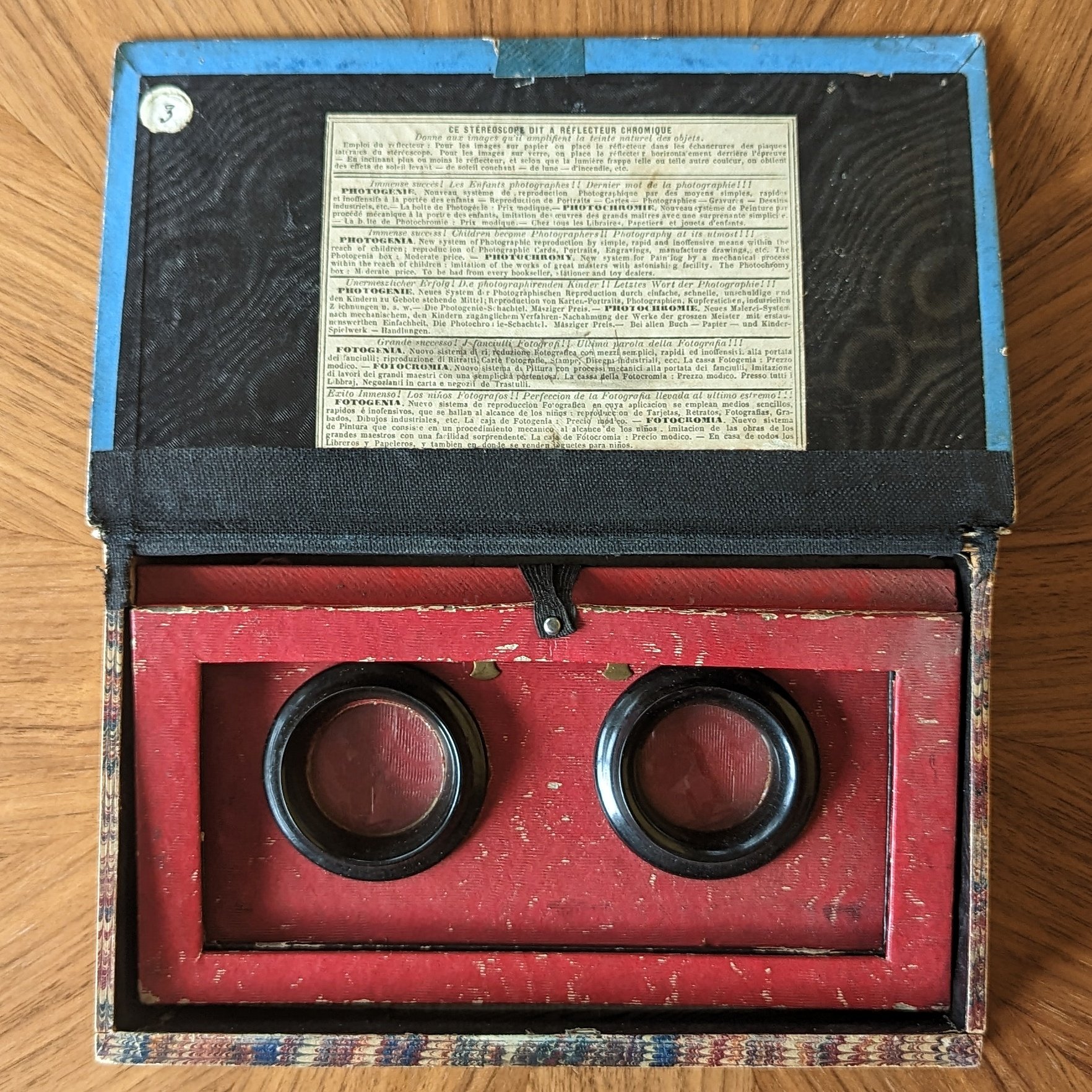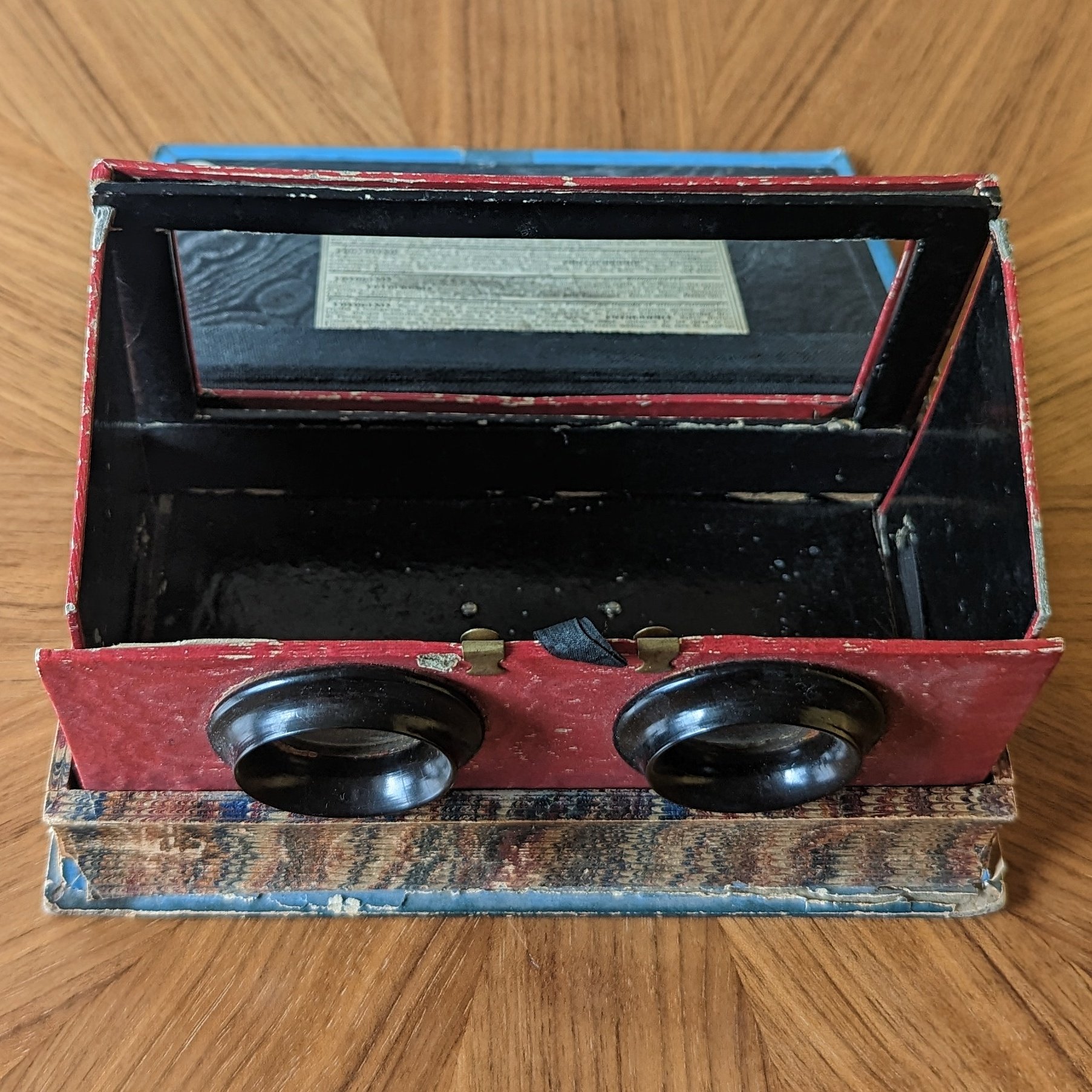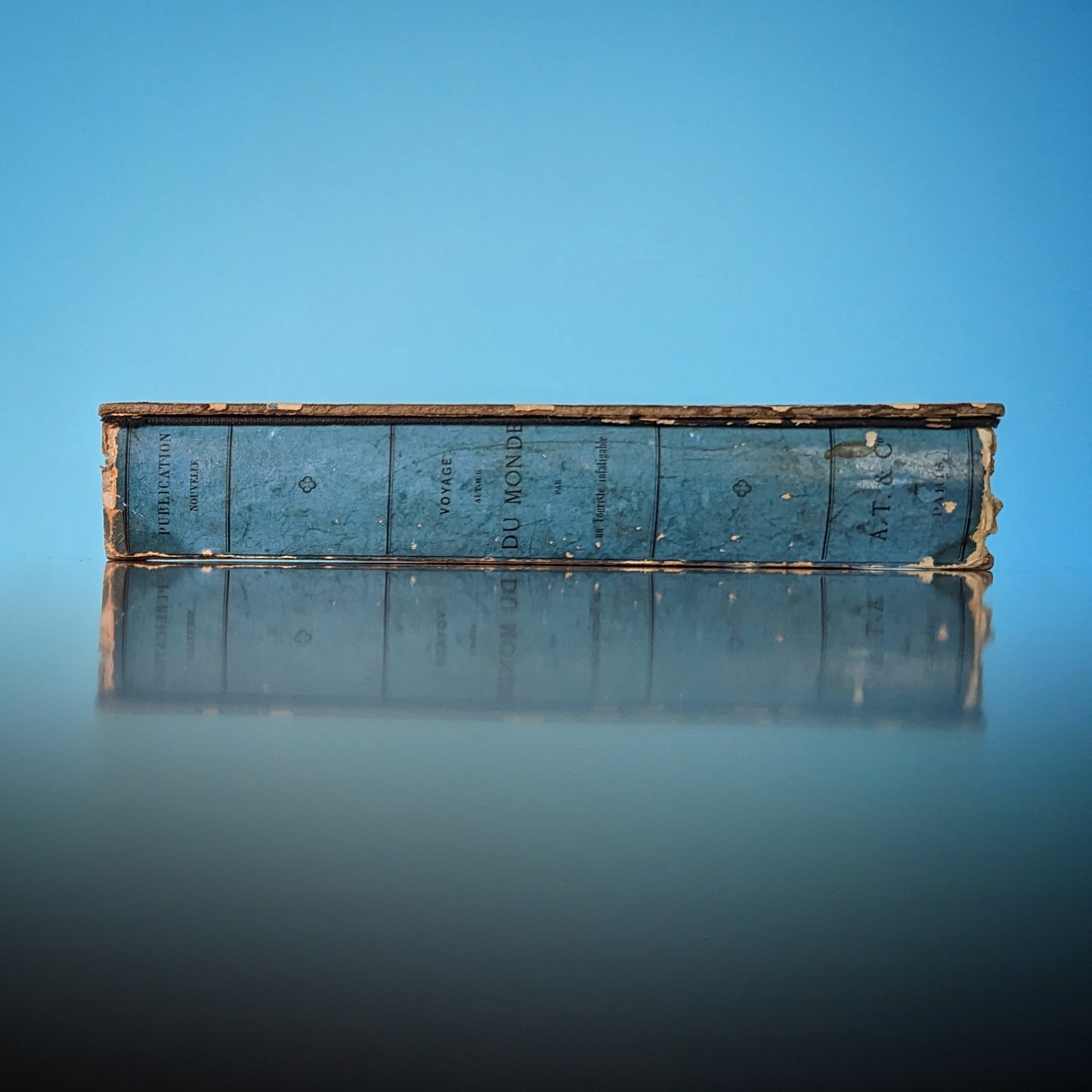Voyage autour du Monde Chromatic Reflector Book Stereoscope
France, 1860s
We love everything about the design of this stereoscope: the colors, its foldaway design, and the fact that it folds away into a paper-wrapped wood box that looks like a book. We also love that it seems to be copy #3! The cover bears the title “Voyage autour du Monde par un touriste defatigable” which translates from French to: “Trip around the world for a tireless tourist.” We chose this stereoscope for our collection based on its looks alone, not realizing this was a special chromatic reflector stereoscope. Ours is missing the chromatic reflector, lost through the years as is the case with the few others viewers of this kind that we’ve seen.
The patent for the chromatic reflector was filed by Adolphe Teissonnière in 1864. It’s intended to give color to prints or glass slides. In an article originally published in the July 1981 issue of Stereo World, Arthur Girling described chromatic reflectors for French box stereoscopes this way:
“The reflector is simply a card about the size of a print slide with two brightly coloured strips on each side, gold/dark blue on one side and red/dark blue on the other. The card is held so that it reflects light down on to the face of the print slide, or on the back of the glass slide, and by rocking the card the effects of "sunrise, sunset, moonlight, fire, etc." can be obtained. It is something of a gimmick, but if the lighting is strong and the card adjusted properly, the results can be impressive, especially with landscapes.”
Girling’s description aligns well with the instructions for use inside the cover of the stereoscope which, translated from French, reads:
Gives the images it amplifies the natural color of the objects
Use of the reflector: For images on paper, the reflector is placed in the grooves of the stereoscope side panels. For glass images, the reflector is placed horizontally behind the specimen. By tilting the reflector more or less, and depending on whether the light hits this or that color, one can obtain the effects of a rising sun -- a setting sun -- a moon -- a fire, etc.
The text inside the cover also advertises, in 5 different languages, two products for getting children interested in photography and painting: the Photogenia and the Photochromy, both offered at a “moderate price” from booksellers, stationers, and toy dealers.



